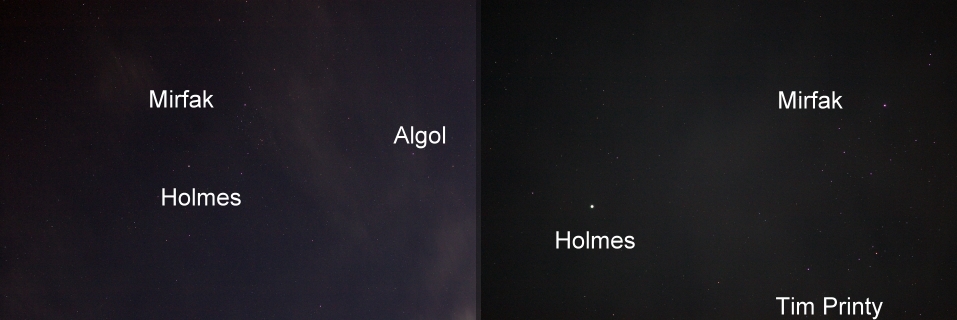
COMET HOLMES 17/P - The Dandelion Comet
Comet Holmes is normally a very faint comet that has a perihilion distance of greater than 1AU. It was discovered in 1872 when it suddenly brightened and was easily visible to astronomers for several weeks. After this, it faded into obscurity until 2007. In late October 2007, the comet was 2.2 AU from the sun and 1.6 AU from the earth when it suddenly flared to magnitude +2.5 in the constellation of Perseus. The following pcitures show the progress of the comet over the next few weeks.
The comet was first reported to have brightened on October 24th. Skies in NH were cloudy that night but on the 25th, conditions improved and I was able to take some images.

These two images show the area of the sky where the comet appeared. On the left is a 50mm shot of Perseus and on the right is a 200mm closeup.
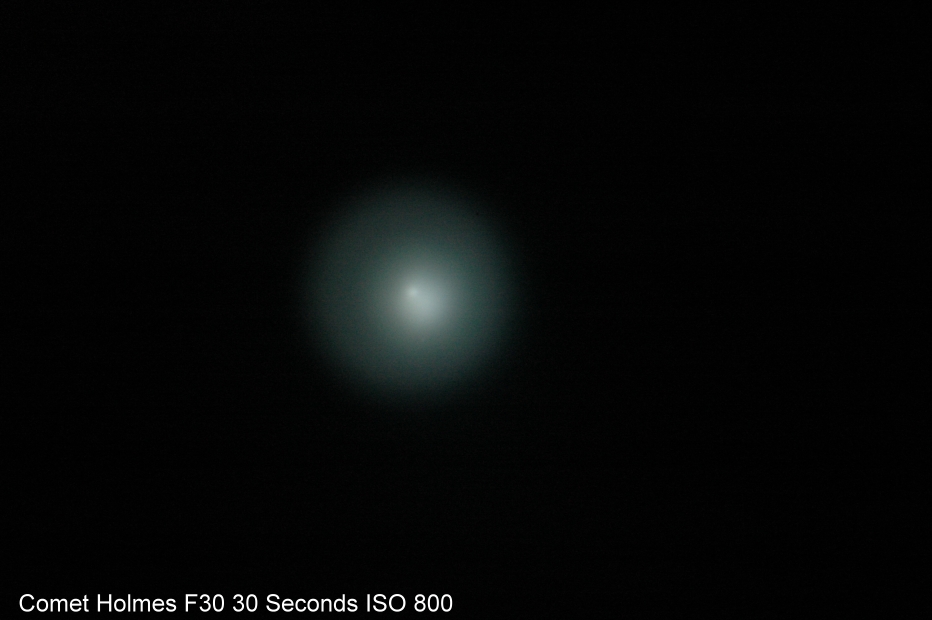
This photogrpah shows the comet at F30. Exposure time was 30 seconds at ISO 800.
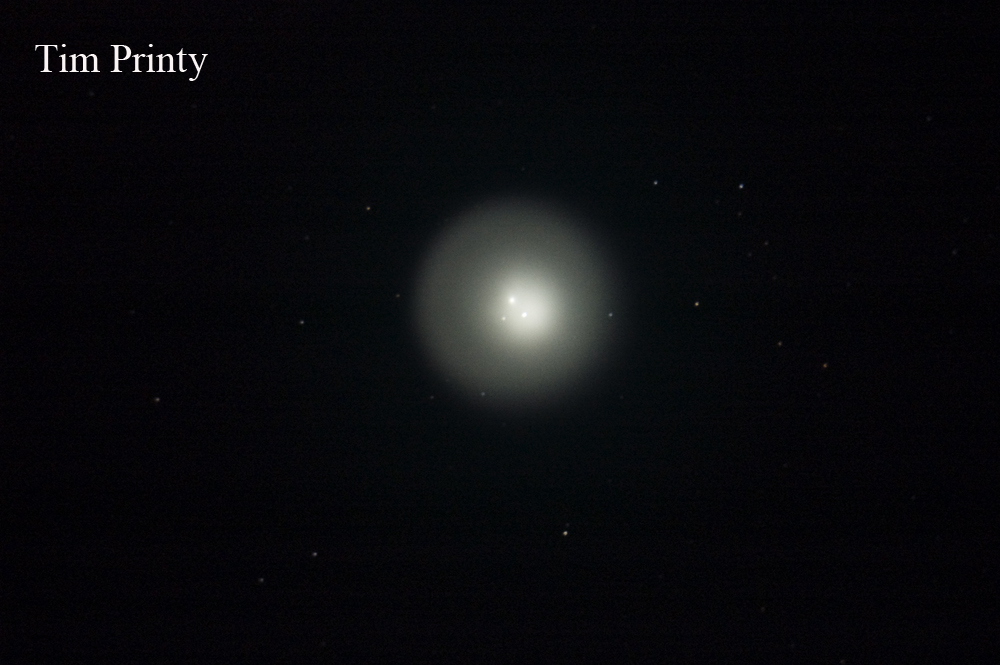
The weather was cloudy on the 26th but on the 27th skies improved. This image was taken at F10 with an exposure time of 30 seconds
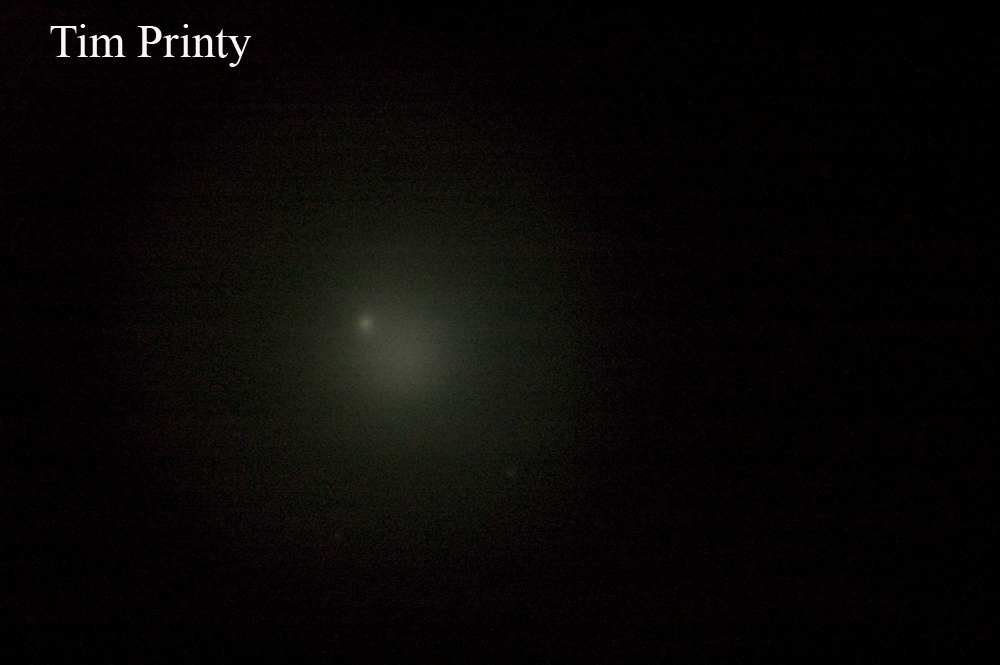
At F30, it was obvious the comet's coma had expanded. This image was 30 seconds long.
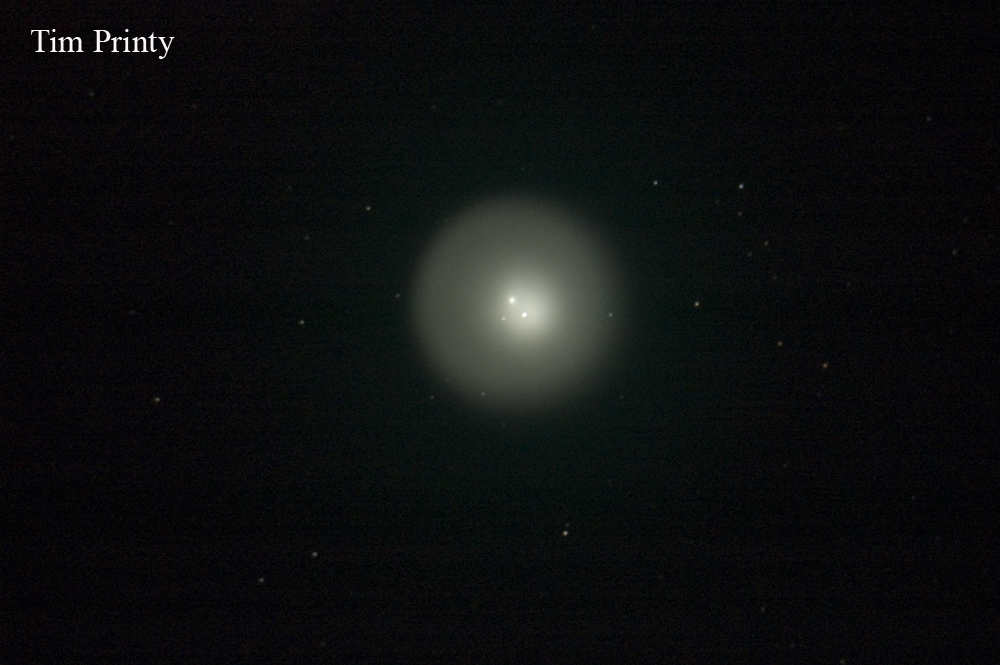
On the 28th, the coma's expansion had slowed. This image was at F10 with an exposure time of 30 seconds
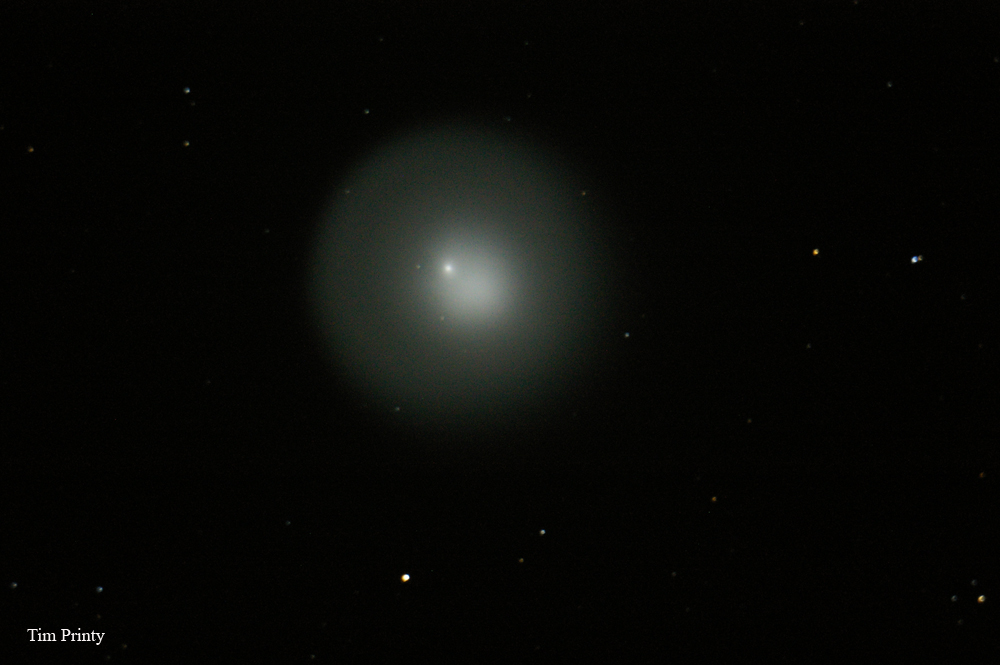
On the 30th, it was clear that the comet's size continued increase. This is a F10 30 second exposure at ISO 800
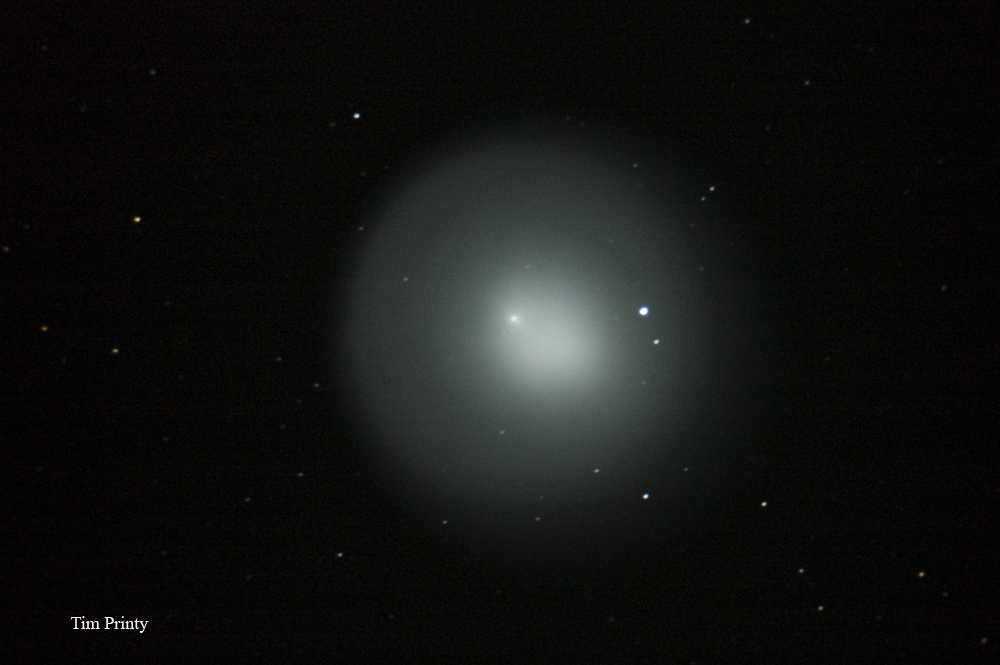
By the first of November, I started using longer exposures to record other details. This exposure is one minute long at F10
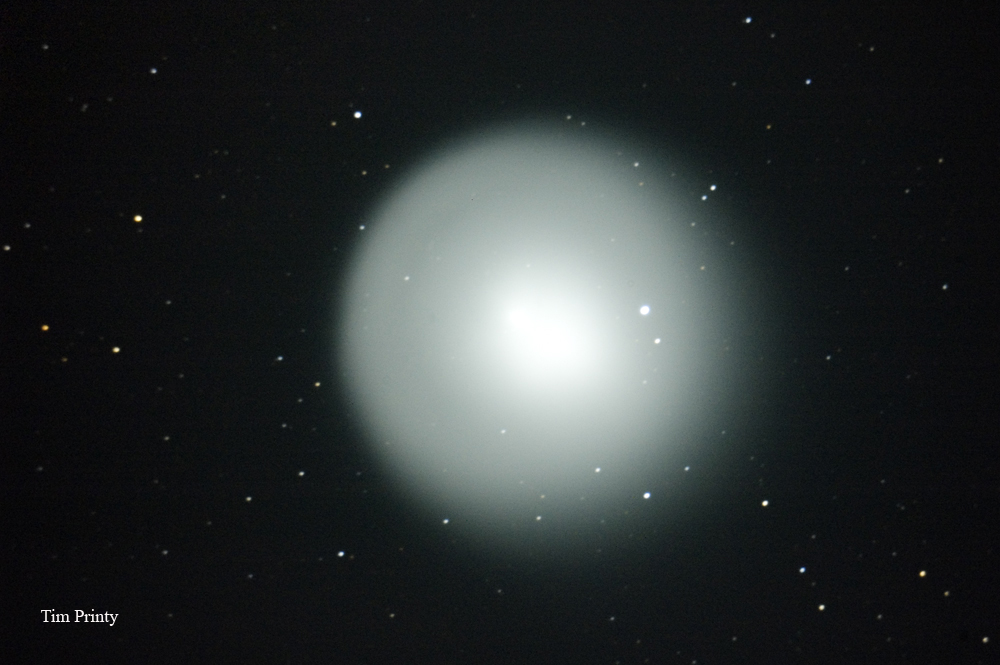
A five minute exposure revealed a fan shaped and less well defined coma to the lower right away from the sun.
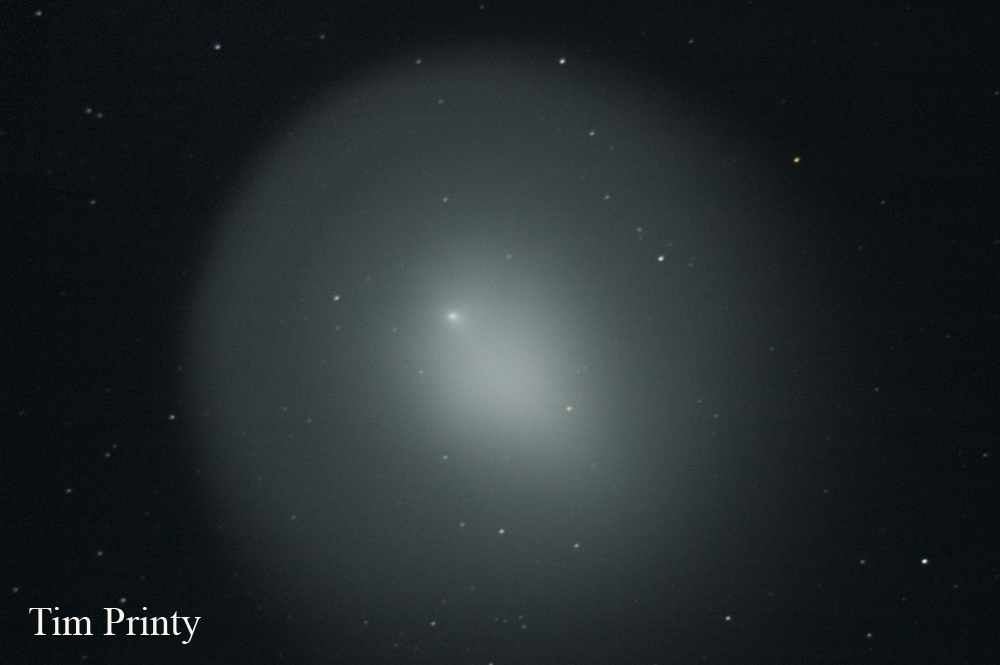
By the Sixth of November, the comet's coma continued to expand.
The comet faded and with winter setting in, I did not get any more significant pictures of the comet. Bitter temperatures and snow storms prevented any photography from my dark sky site.